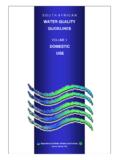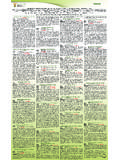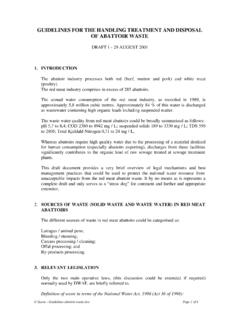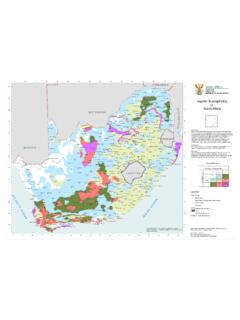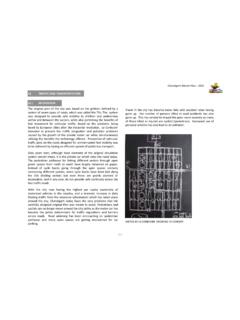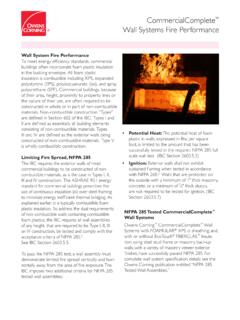Transcription of INTRODUCTION TO Green Drop Report Page i - dwa.gov.za
1 THE Green drop Report INDEX. PAGE. Chapter 1: INTRODUCTION to the Green drop Report 1-8. Chapter 2: National Overview of Wastewater Service Performance 9 - 20. Chapter 3: Eastern Cape 21 - 69. Chapter 4: Free State 70 - 122. Chapter 5: Gauteng 123 - 160. Chapter 6: Kwa-Zulu Natal 161 - 207. Chapter 7: Limpopo 208 - 244. Chapter 8: Mpumalanga 245 - 292. Chapter 9: North West 293 - 323. Chapter 10: Northern Cape 324 - 384. Chapter 11: Western Cape 385 450. INTRODUCTION TO Green drop Report Page i ACRONYMS. ADWF Average Dry Weather Flow COD Chemical Oxygen Demand CRR Cumulative Risk Rating DWA Department of Water Affairs GA General Authorisation GD Green drop GDC Green drop Certification GDS Green drop System ( ).
2 MLSS Mixed Liquor Suspended Solids NGO Non-Governmental Organisation O&M Operation and Maintenance PST / SCT Primary Settling Tank / Secondary Clarification Tank RPMS Regulatory Performance Measurement System SLA Service Level Agreement WRC Water Research Commission WSI Water Services Institution W2 RAP Wastewater Risk Abatement Plan WS Water Services WWTP Wastewater Treatment Plant R2834 Regulation 2834. Provinces: MP Mpumalanga Province NW North West Province GP Gauteng Province LP Limpopo Province FS Free State Province KZN Kwa-Zulu Natal Province WC Western Cape Province NC Northern Cape Province EC Eastern Cape Province INTRODUCTION TO Green drop Report Page ii CHAPTER 1: INTRODUCTION TO THE Green drop Report CARD FOR.
3 2010 / 2011.. greatness does not come from doing the same things but trying harder. When you do that, even the combined efforts of all your people are too diluted to make much of a difference. Like having hundreds of people pushing with their hands on a brick wall, you spend a lot of energy getting nowhere. Greatness comes from focus. Having the effort of those hundreds of people translate into a single point of impact, like a single sledgehammer, will definitely have more impact. Core competencies are focus points that funnel people's skills and efforts to make a greater effect.. (Paula Williams).
4 The Green drop regulation programme seeks to identify and develop the core competencies required for the sector that if strengthened, will gradually and sustainably improve the level of wastewater management in South Africa. This form of incentive- and risk-based regulation holds the intent to synergise with the current goodwill exhibited by municipalities and existing Government support programmes to give the focus, commitment and planning needed. Regulation is important to ensure effective and efficient delivery of sustainable water services. This is recognised both by South African authorities and Internationally.
5 It clarifies the requirements and obligations placed on water service institutions, thereby protecting consumers from a potentially unsustainable and unsafe service. Incentive-based Regulation in South Africa (Municipal Green drop Certification). One of the regulatory approaches that are gaining significant momentum is that of Incentive-based Regulation, which was introduced on 11 September 2008 to the water sector at the National Municipal Indaba in Johannesburg by the Minister of Water Affairs. The concept was defined by two programmes: the Blue drop Certification Programme for Drinking Water Quality Management Regulation; and the Green drop Certification Programme for Wastewater Quality Management Regulation.
6 The Green drop process measures and compares the results of the performance of Water Service Authorities and their Providers, and subsequently rewards (or penalises) the municipality upon evidence of their excellence (or failures) according to the minimum standards or requirements that has been defined. Awareness of this performance is obtained by pressure through the customers, the media, political classes and NGOs. The strategy revolves around the identification of mediocre performing municipalities who consequently correct the identified shortcomings, as well as the INTRODUCTION of competitiveness amongst the municipalities and using benchmarking in a market where competition is difficult to implement.
7 Risk-based Regulation in South Africa (Municipal CRR profiles). Whilst the Green drop assessment focuses on the entire business of the municipal wastewater services (entire value chain), the risk analysis focuses on the wastewater treatment function specifically. This allows the Regulator to have insight into the treatment component of the municipal business, which is one of the high risk components within the production chain. Risk-based regulation allows the municipality to identify and prioritise the critical risk areas within its wastewater treatment process and to take corrective measures to abate these.
8 Risk analysis is used by the Regulator to identify, quantify INTRODUCTION TO Green drop Report Page 1. and manage the corresponding risks according to their potential impact on the water resource and to ensure a prioritised and targeted regulation of high risk municipalities. Risk is defined and calculated by the following formulae: Cumulative Risk Rating (CRR) = A x B + C + D. where: A = Design Capacity of plant which also represent the hydraulic loading onto the receiving water body B = Operational flow exceeding-, on- and below capacity C = Number of non-compliance trends in terms of effluent quality as discharged to the receiving water body D = Compliance or non-compliance technical skills A CRR value is calculated for each municipal wastewater treatment facility in South Africa, as provided in this Green drop Report .
9 Municipalities can consult the Department of Water Affairs to obtain the individual risk assessments for their plants. However, the various municipal CRR profiles are usually send to the respective Executive Mayors from the Minister's office, to inform the political principles of the facilities that reside in high- and critical risk space. A CRR%deviation is used throughout the Report to indicate that variance of a CRR value before it reaches its maximum CRR value. The higher the CRR%deviation value, the closer the CRR risk is to the maximum value it can obtain. Example 1: a 95% CRR%deviation value means the plant has only 5%.
10 Space remaining before the system will reach its maximum critical state (100%). Example 2: a 25%. CRR%deviation value means the plant holds a low and manageable risk position and is not close to the limits that define a critical state (90-100%). Wastewater Risk Abatement Planning (W2 RAP). Wastewater treatment is the first barrier in a multi-barrier system of ensuring public- and environmental health. In the same way that the Water Safety Plan identifies, plan and manage the risks in the drinking water treatment and supply systems, does the W2 RAP identify, plan and manage risks in the wastewater collection and treatment system.


